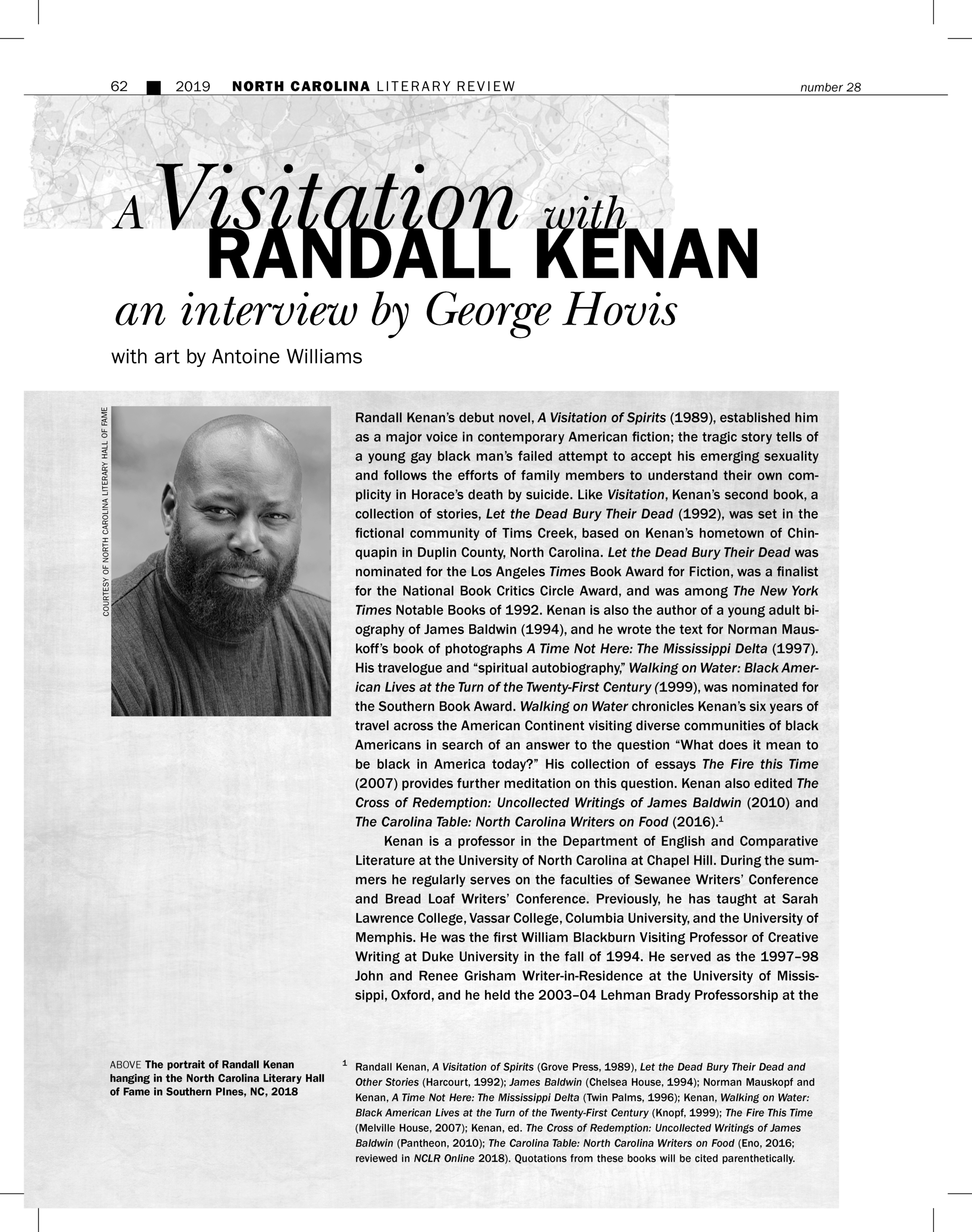Friday from the Archives: “A Visitation with Randall Kenan” an interview by George Hovis with art by Antoine Williams in NCLR 2019
Our 2025 flagship print issue will have two pieces about Randall Kenan! In this 2018 interview by long-time contributor George Hovis, Kenan talks not only about his wide ranging writings but also his youth in Chinquapin and his time away from North Carolina.
Hovis: In Walking on Water, many of the folks you interview assert that one of the unfortunate effects of desegregation was to facilitate the flight of the “Talented Tenth” away from black communities into white ones. Do you agree with that assessment? And, if so, what can be done about it?
Kenan: If you think of black folks as the ur-Americans, as I think they are, everything that happens in America happens to black folk before, and they mirror or magnify the American experience. It seems odd that we condemn black people when they “make it,” for moving to the nicer neighborhoods, for “moving on up,” to quote a pop cultural reference, “The Jeffersons.” Of course people want to do that. And then the question becomes, how important is physical proximity in a community? And this leads to questions like, do these communities really exist anymore? Has this thing broken down? Case in point, again, “The Jeffersons” as an archetype. And, even more importantly, are there infrastructures? Are there ways of being involved, for people who care? And we’re also proceeding from a false assumption that all middle-class black people cared about the welfare of the black community, because some of them didn’t give a hoot about the race. So,
for people who care, are there ways that they can participate, contribute to the infrastructure, and build up the race – if you want to be essentialist about it – in ways that are just as, if not more, influential? And I point to the interview I did with the judge in St. Simons Island, Georgia, “a hundred black men of Glynn.” Physically, they all didn’t live in the same community, but they adopted young black guys. And
that’s happening all over the country. It’s not touted a lot. It’s not in the news all the time, because if it’s not bleeding it’s not leading and that sort of thing. But I think that’s a way for people who care to be involved. And, again, there’s this perpetuation of the myth that when the black folk lived “in the neighborhood,” they actually contributed. It’s a really complicated question.
Hovis: If you were to undertake the writing of Walking on Water today, if you were to set off on that journey now, two decades later, during the era of Trump, of Black Lives Matter, of increased mass incarceration (what Michelle Alexander has come to identify as “the New Jim Crow”), do you think you would find radically different answers to the question “What does it mean to be black in America today?
Kenan: I plead the interwebs. I think, due to the internet explosion, not only would the approach and methodology be significantly different, but the substance would be altered as well. And if you think about the
penultimate chapter in the book, which is set in Cyberspace, USA, I was already thinking about how the rising phenomenon was going to change the idea of “blackness.” And I think it has.
Read the entire essay on ProQuest and pick up a 2019 issue before they’re all sold out!
Read the entire story online in our 2019 digital issue.
